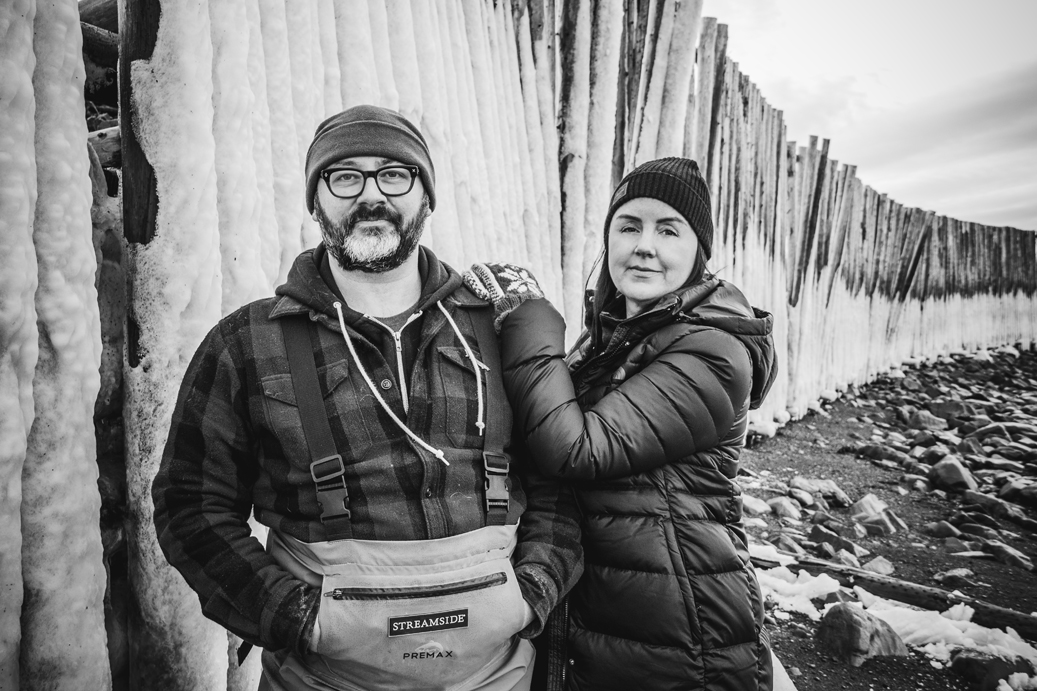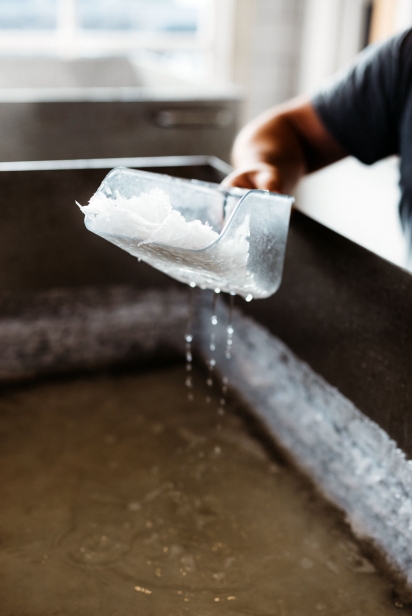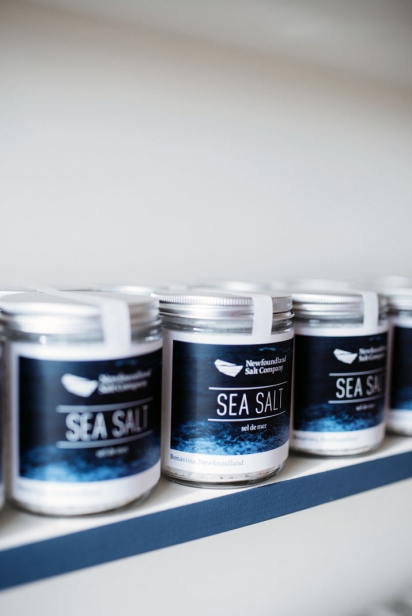Worth Their Weight
It’s hard not to overestimate the significance of salt in our civilization’s history. As the oldest seasoning and preservative, salt has been harvested by humans for as many as 8,000 years.
As a scarce and expensive commodity in ancient Roman times, salt’s value is legendary. To sit above or below the salt at the dining table identified precedence in the seating arrangements, according to one’s rank. Roman soldiers were often paid partially in salt and it’s from this transaction that we have the origins of the word soldier (‘sal dare’ meaning to give salt) as well as the root of salary (‘salarium.')
In modern times, salt is still very much a central ingredient used in cooking around the world. When chef Peter Burt moved back to his native Newfoundland after working in kitchens across Canada, Australia, China and Spain, he came up with the idea for the Newfoundland Salt Company.
As chef de cuisine at the famed St. Johns’ restaurant, Raymond’s, he began tinkering with and refining his method of harvesting sea salt. “As Newfoundlanders, we’re surrounded by salt water, he muses. “Why hadn’t we done this before?"
It was around this time that Burt reconnected with Robin Crane, whom he’d dated in high school. She encouraged him to sell his salt at the local farmers’ market, and before long, the pair had quit their jobs to work full-time on their new venture. After initial success, they relocated to the town of Bonavista and made the historic Arthur Sweetland Shop on Church Street (a former dry goods store dating back to 1895) the official headquarters of the Newfoundland Salt Company.
To produce their salt, Burt and Crane use what is known as the rapid-boil method. They collect sea water from Trinity Bay in Bonavista and boil it for two days until it reaches a very high salinity. They then move the water to specialized vessels, known as slow pots, where the liquid is reduced to a low temperature for an additional six to eight days. Lastly, they harvest the sea salt, dry and package it. (While the rapid-boil method is the most common way to harvest salt in cold climates, solar evaporation is the most prevalent salt-producing technique in the world.)
As they grew their business, Burt drew on his chef connections by sending product samples to friends and acquaintances in the industry. “The feedback was awesome and most chefs began placing orders and told us it was a great quality salt. From there, our salt began to pop up on social media and it kind of took off,” Burt explains. And as for plans for growth, the salt-makers plan to expand into the U.S. very soon and into Europe in the next couple of years.
Currently, the couple produces three varieties. A 40-gram tin will set you back about $14 and is meant to be used as a finishing salt at the end of the cooking process for optimal texture and flavour. Burt and Crane describe it as clean and flakey, with a slight taste of the ocean.
Their classic sea salt adds a crisp and delicate crunch to any savoury or sweet dish. They pick buds from alder trees, which adds floral, earthy notes, as well as a hint of citrus, to the green alder variety. Finally, the smoked juniper flavour — the product of smoking low-lying juniper bush for a minimum of eight hours — gives food an aromatic and “sappy smoke” flavour. According to Crane, the specialty flavoured salts come from the idea of wanting to make flavoured salts that are not necessarily
According to Crane, the specialty flavoured salts come from the idea of wanting to make flavoured salts that are not necessarily unique to Newfoundland, but are a representation of the terroir. The pair have plans to offer more flavours in the future, but for now “it’s a secret,” Crane says.
Getting past the red tape was a big challenge. “This was a relatively new idea to the province and as with all things that are new and different, you have to prove yourself,” Crane explains. Having a team of just two poses additional hurdles. “We do everything that has to do with the business, from capturing the water to making the salt to packaging the salt,” she says. “This can be challenging at times, both mentally and physically.”
Ultimately, though, returning home to Newfoundland and starting the business together has been incredibly fruitful. “Working for ourselves has probably been the most rewarding thing about what we do,” Crane explains. “Our heart and soul goes into this business and the feedback from everyone has been 100-per-cent positive and that’s really the best part. It pushes us to work harder, to be better and to love what we do while we’re at it.”
Newfoundland Salt Company
45 Church St., Bonavista, Nfld.
Newfoundlandsaltcompany.com | 709.770.7412 | @newfoundlandsaltcompany













